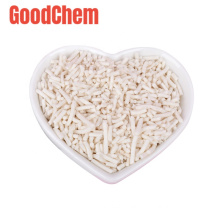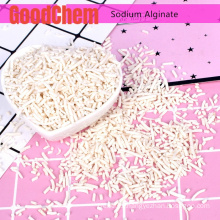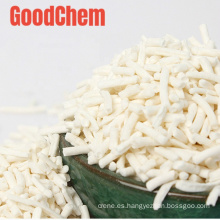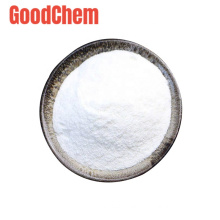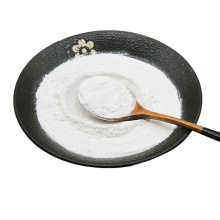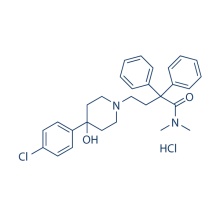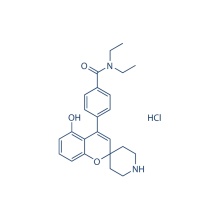.cp_wz tabla {borde superior: 1px sólido #ccc; borde izquierdo: 1px sólido #ccc; } .cp_wz table td {borde derecho: 1px sólido #ccc; borde inferior: 1px sólido #ccc; padding: 5px 0px 0px 5px;} .cp_wz table th {border-right: 1px solid #ccc; border-bottom: 1px solid #ccc; padding: 5px 0px 0px 5px;} \ n Peso molecular: 428.95 ADL5859 HCl es un agonista del receptor δ-opioide con Ki de 0.8 nM, selectividad contra el receptor opioide κ, μ, y actividad inhibidora débil en el canal hERG. Fase 2. \ n ADL5859 agoniza el receptor opioide δ con una selectividad 1000 veces mayor que el receptor opioide μ o κ con Ki de 32 nM y 37 nM, respectivamente. ADL5859 muestra una actividad inhibidora débil en el canal hERG con una CI50 de 78 μM. La CE50 de ADL5859 contra el receptor opioide δ es 20 nM. A la dosis de detección de 3 mg / kg por vía oral, ADL5859 produce una reversión del 100% de la hiperalgesia en la pata inflamada. La DE50 oral de ADL5859 en el ensayo de hiperalgesia mecánica FCA es de 1,4 mg / kg. La antihiperalgesia producida por ADL5859 (3 mg / kg, po) se revierte mediante el pretratamiento con el antagonista opioide δ naltrindol (0,3 mg / kg sc), demostrando así un efecto mediado por el receptor δ. En el ensayo de natación forzada en ratas, ADL5859 (3 mg / kg po) produce una fuerte actividad similar a un antidepresivo, como lo demuestra una disminución significativa en el tiempo de inactividad y un aumento significativo en el tiempo de natación. La biodisponibilidad de ADL5859 (3 mg / kg po) en ratas y perros es del 33% y 66%, respectivamente. ADL5859 reduce eficazmente el dolor inflamatorio y neuropático principalmente al reclutar receptores δ-opioides expresados por neuronas periféricas que expresan Nav1.8. Protocolo (solo como referencia) Ensayo celular: [1]
|
Cell lines
|
Chinese hamster ovary (CHO) cells stably expressing human κ, μ, or δ opioid receptors
|
|
Concentrations
|
0 nM-10 nM
|
|
Incubation Time
|
60 minutes
|
|
Method
|
Membrane preparations from Chinese hamster ovary (CHO) cells stably expressing human κ, μ, or δ opioid receptors are prepared. The assay buffer used is composed of 50 mMtris(hydroxymethyl) aminomethaneHCl, pH 7.8, 1.0 mM ethylene glycol bis(β-aminoethyl ether)-N,N,N',N'-tetraacetic acid (EGTA free acid), 5.0 mM MgCl2 10 mg/L leupeptin, 10 mg/L pepstatin A, 200 mg/L bacitracin, and 0.5 mg/L aprotinin. After dilution in assay buffer and homogenization in a Polytron homogenizer for 30 seconds, membrane proteins (10-80 μg) in 250 μL of assay buffer are added to mixtures containing ADL5859 and [3H]diprenorphine (0.5-1.0 nM, 25000-50000 dpm) in 250 μL of assay buffer in 96-well deep-well polystyrene titer plates and incubated at room temperature for 60 minutes. Reactions are terminated by vacuum filtration with a Brandel MPXR-96T harvester through GF/B filters that have been pretreated with a solution of 0.5% polyethylenimine and 0.1% bovine serum albumin for at least 1 hour. The filters arewashed four times with 1.0 mL each of ice-cold 50 mM Tris-HCl, pH 7.8, and 30 μL of Microscint-20 is added to each filter. Radioactivity on the filters is determined by scintillation spectrometry in a Packard TopCount. [3H]Diprenorphine with a specific activity of 50 Ci/mmolisused. The Kd values for [3H]diprenorphine binding are 0.33 nM for the κ and μ receptors and 0.26 nM for the δ receptor. Receptor expression levels, determined as Bmax values from Scatchard analyses, are 4400, 4700, and 2100 fmol/mg of protein for the κ, μ, and δ receptors, respectively. Preliminary experiments are performed to show that no specific binding is lost during the wash of the filters, that binding achieved equilibrium within the incubation time and remained at equilibrium for at least an additional 60 minutes, and that binding is linear with regard to protein concentration. Nonspecific binding, determined in the presence of 10 μM unlabeled naloxone, is less than 10% of total binding. Protein is quantified by the method of Bradford. The data from competition experiments are fit by nonlinear regression analysis with the program Prism using the four-parameter equation for one-site competition, and Ki values are subsequently calculated from EC50 values by the Cheng-Prusoff equation.
|
Estudio con animales: [2]
|
Animal Models
|
Nav1.8-cKO mice, CMV-KO mice, C57BL6/J × SV129Pas mice
|
|
Formulation
|
0.5% hydroxypropyl methylcellulose/0.1% Tween 80
|
|
Dosages
|
10 mg/kg - 300 mg/kg
|
|
Administration
|
Administered via p.o.
|
|
Solubility
|
0.5% hydroxyethyl cellulose/0.1% Tween 80,
30 mg/mL
|
|
* Please note that Selleck tests the solubility of all compounds in-house, and the actual solubility may differ slightly from published values. This is normal and is due to slight batch-to-batch variations.
|
Conversión de diferentes modelos de animales basados en BSA (valor basado en datos del Borrador de Directrices de la FDA)
|
Species
|
Baboon
|
Dog
|
Monkey
|
Rabbit
|
Guinea pig
|
Rat
|
Hamster
|
Mouse
|
|
Weight (kg)
|
12
|
10
|
3
|
1.8
|
0.4
|
0.15
|
0.08
|
0.02
|
|
Body Surface Area (m2)
|
0.6
|
0.5
|
0.24
|
0.15
|
0.05
|
0.025
|
0.02
|
0.007
|
|
Km factor
|
20
|
20
|
12
|
12
|
8
|
6
|
5
|
3
|
|
Animal A (mg/kg) = Animal B (mg/kg) multiplied by
|
Animal B Km
|
|
Animal A Km
|
Por ejemplo, para modificar la dosis de resveratrol utilizada para un ratón (22,4 mg / kg) a una dosis basada en el BSA para una rata, multiplique 22,4 mg / kg por el factor Km para un ratón y luego divida por el factor Km para una rata. Este cálculo da como resultado una dosis equivalente para ratas de resveratrol de 11,2 mg / kg.
|
Rat dose (mg/kg) = mouse dose (22.4 mg/kg) ×
|
mouse Km(3)
|
= 11.2 mg/kg
|
|
rat Km(6)
|
\ n Información química
|
Molecular Weight (MW)
|
428.95
|
|
Formula
|
C24H28N2O3.HCl
|
|
CAS No.
|
850173-95-4
|
|
Storage
|
3 years -20℃Powder
|
|
6 months-80℃in solvent (DMSO, water, etc.)
|
|
Synonyms
|
|
|
Solubility (25°C) *
|
In vitro
|
DMSO
|
86 mg/mL
(200.48 mM)
|
|
Water
|
5 mg/mL
(11.65 mM)
|
|
Ethanol
|
1 mg/mL
(2.33 mM)
|
|
In vivo
|
0.5% hydroxyethyl cellulose/0.1% Tween 80
|
30 mg/mL
|
* <1 mg/ml means slightly soluble or insoluble.
* Please note that Selleck tests the solubility of all compounds in-house, and the actual solubility may differ slightly from published values. This is normal and is due to slight batch-to-batch variations.
|
|
Chemical Name
|
Benzamide, N,N-diethyl-4-(5-hydroxyspiro[2H-1-benzopyran-2,4'-piperidin]-4-yl)-, hydrochloride (1:1)
|
Calculadora de molaridad Calculadora de dilución Calculadora de peso molecular
Grupos de Producto : Señalización neuronal > Inhibidor de los receptores de opioides
